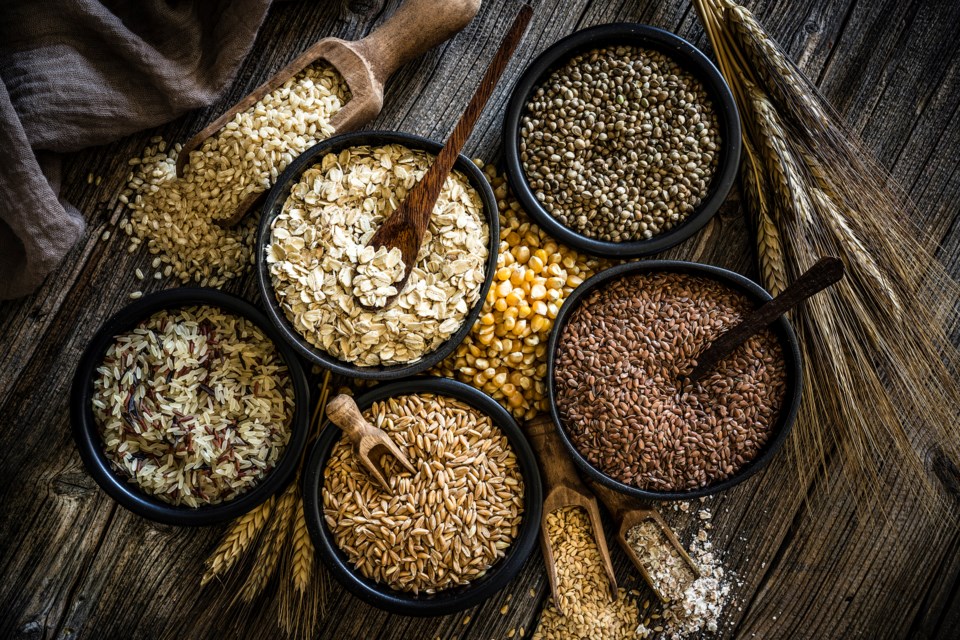Grains have been a part of humanity’s diet since ancient times and are an essential source of many nutrients, but not all grains are created equally.
Some grains, like wheat (and especially the genetically modified wheat) where we only use the starchy part found in white flour products, have contributed to a huge health concern. Gluten contains no essential nutrients and is prevalent in white flour products like baking, pizza, bread, pasta and cereal. It is a major comfort food but many people have lost the ability to digest it, and gluten intolerance / allergy has become rampant. Over-consumption of gluten may contribute to a diagnosis of Celiac Disease, IBS, Crones, Colitis or other digestive disorders where the intestinal tract gets very inflamed by the gluten. People who consume a lot of the above gluten containing foods, can expect to have digestive issues eventually.
However, there are many gluten-free grain alternatives which are full of nutrients. Used as a whole grain (which contains the bran, germ, and endosperm) they can be cooked like rice or oatmeal, or ground and used as flour. Grains are the most prevalent source of food energy worldwide and the following organic grains are a great source of anti-oxidants (cancer prevention), help lower LDL (bad cholesterol), lower blood pressure (to lessen heart disease risk), and help manage blood sugar levels (to support weight-loss and decrease the chance of type 2 diabetes). They support immune function and most have anti-inflammatory properties. They also contain healthy phytochemicals and are excellent sources of essential nutrients including protein, dietary fibre, iron, zinc, copper, thiamin, magnesium, manganese, phosphorus, thiamine and other B-Vitamins, selenium, folic acid and amino acids.
Oats top my list as they are so healthy, readily available, easy to use, inexpensive and already such a common part of the North American diet. But I am NOT talking about instant oatmeal packages that are full of sugar and artificial flavouring, which I classify as junk food (void of nutritional value). I buy the organic sprouted oats from Costco that require 5 minutes to cook. This is really no time at all when you think about it, and the benefits are well worth the cooking time.
Barley is mainly used in soups but can be added to oatmeal or other dishes. (Pot barley is healthier than pearl barley). Quinoa is very nutritious and is used as a rice replacement. It is also excellent cold in a salad such as the delicious kale-quinoa salad. Amaranth is used whole in a hot cereal or popped (heated in a skillet) as a salad topper or a snack. Buckwheat is mainly eaten as a flour in pancakes or crepes. Teff is used in breads (as flour) and seeds can be sprinkled on salads or cooked and used like rice or hot cereal. Farro is a recent favourite of mine. It is nutty, chewy, and hearty. It is used soups, as a rice substitute, in a hot breakfast cereal or in salads. Bulgur is commonly used in the popular tabbouleh salad. Freekeh has a chewy texture and is great for salads or as a side dish. Wild Rice can be eaten alone or mixed with other grains or brown rice and is often found in stuffing. Millet is an Asian grain that can be used in porridge, congee and popular in stir fries. Birds love it too.
I am still cautious with how much grain I consume and generally try to have it in the form of a hot breakfast bowl (email me for an excellent recipe) or sprinkled cold on a salad mid-day. Find recipes online or buy a good book explaining the best ways to use the grains mentioned above.
If you have diagnosed gastrointestinal issues you need to be careful with grains until you have healed your gut and can digest fibre again.
Claire Nielsen is a health coach, author, public speaker and founder of www.elixirforlife.ca. The information provided in the above article is for educational purposes only and is not a substitute for professional health and medical advice. Please consult a doctor, health-care provider or mental health practitioner if you're seeking medical advice, diagnoses and/or treatment.



